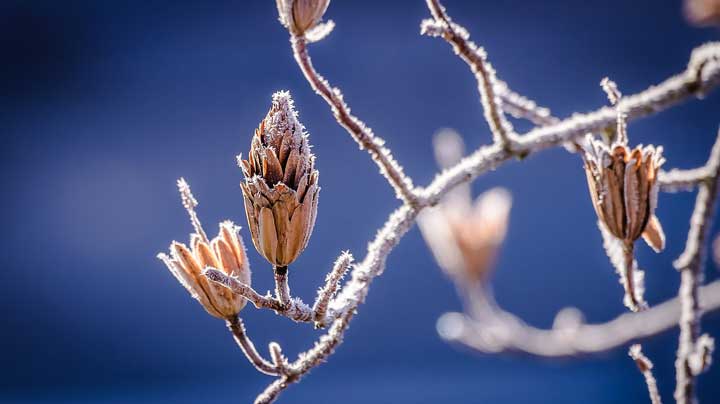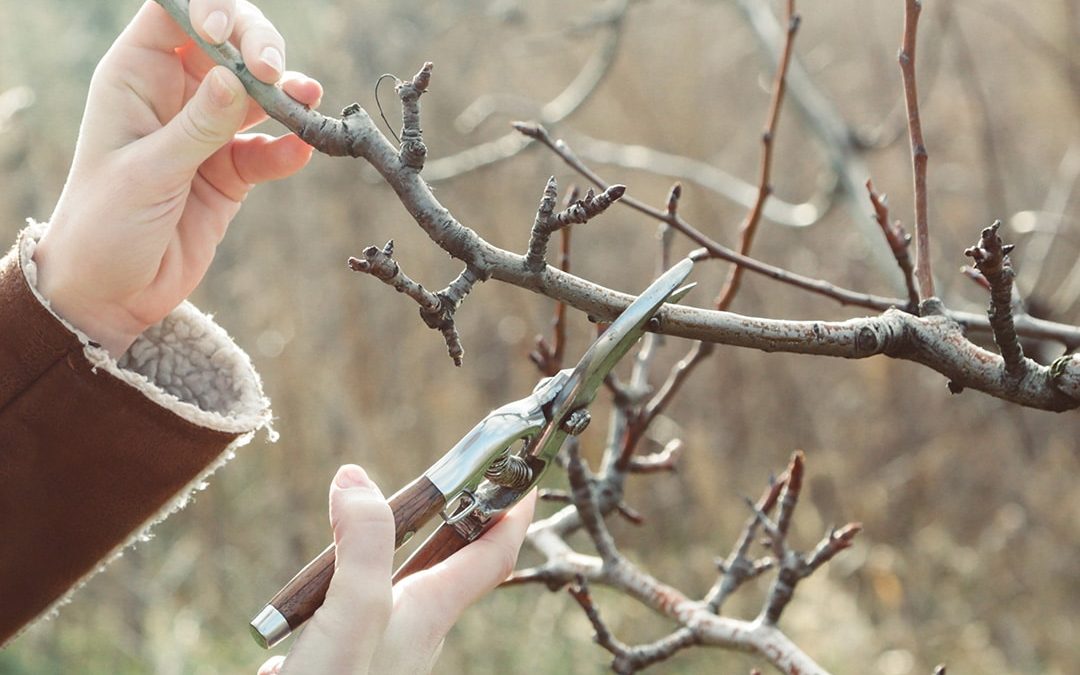Written by Monica Hemingway and published on https://pruningguide.com/
Pruning plants while they’re still dormant—in late winter—offers several advantages. First, it gives you a great excuse to head into the garden on a balmy day when it’s really too early to tackle other spring chores. Dormant-season pruning also permits you to see plant form and structure clearly, a benefit when you’re shaping trees and shrubs.
Table of Contents
Late Winter Pruning Tips

Late winter is the ideal time to prune many types of deciduous trees, shrubs, and vines. However, the trick is knowing which ones to prune now and which ones to leave until later. Here are a few general guidelines to help you prune the right thing at the right time.
The following should be pruned off whenever you notice them, at any time of year:
- dead branches
- diseased branches
- damaged branches
What to Look For
In late winter or early spring, focus on removing the following:
- branches that are thinner than a pencil or diseased
- branches that cross other branches (literally touching, rubbing)
- branches that grow toward the center of the shrub, causing crowding
Hold Off on Pruning Early Spring Blooming Plants
If the plant blooms very early in the season, you may want to wait until it’s finished flowering before you prune it (but first, see this post for reasons why you might want to prune now instead of waiting). These plants typically bloom from buds that were set the previous fall – pruning now will just remove those buds, resulting in few, if any, flowers this spring.
Common plants that fall into this category include:
- Forsythia (see our article on how to prune forsythia)
- Clematis montana
- Witch hazel
- Chokecherry
- Azalea
- Lilac
- Magnolia
- Spirea (early blooming varieties)
- Flowering plum and cherry
Prune These Plants Now
Other plants to prune in late winter/early spring (before growth begins) include shrubs that are grown primarily for their foliage.
- Barberry (note that this is invasive in several states – prune again just before flowering to prevent formation of seeds)
- Burning bush (another invasive plant to prune before flowering)
- Dogwood
- Honeysuckle (Japanese, Amur, Bell’s, Morrow’s, Tatarian, and dwarf honeysuckles are all invasive in many states)
- Ninebark
- Sandcherry
- Smokebush
- Sumac
Prune Fruiting Trees Now
Fruiting trees are often pruned now. This type of pruning stresses the plant and causes it to fruit more heavily.
However, if you have an ornamental cherry, crabapple, or other similar type of tree (that is, you’re not growing it for fruit), pruning now will only result in excessive growth of watersprouts (long, thin branches that grow straight up into the air). Instead, wait until mid-July to mid-August to prune – you’re least likely to get unsightly watersprouts by pruning then.
Summer Bloomers to Prune Now
Plants that bloom later in the season (usually on new wood produced during the spring) can be pruned now. Some typical examples include:
- Butterfly bush should be pruned back hard (close to the ground is good – see our article on rejuvenation pruning for details)
- Wisteria (you’ll also need to prune it in the summer)
- Late-blooming clematis
- Most hydrangeas, especially H. paniculata (although most hydrangeas do not need much pruning)
- Roses (here’s a good video from Peter Kukielski, former curator of the Rockefeller Rose Garden at the New York Botanical Garden – I studied under him and can attest to the fact that he’s incredibly knowledgable)
Original post here https://pruningguide.com/late-winter-pruning-tips/.

